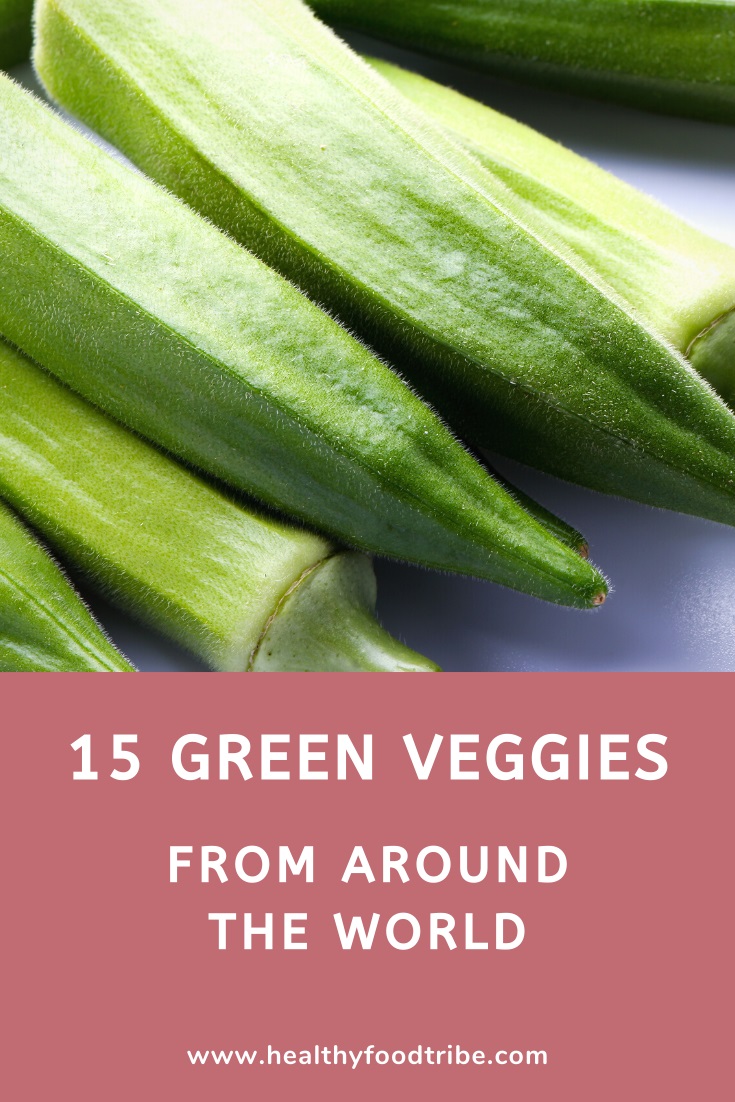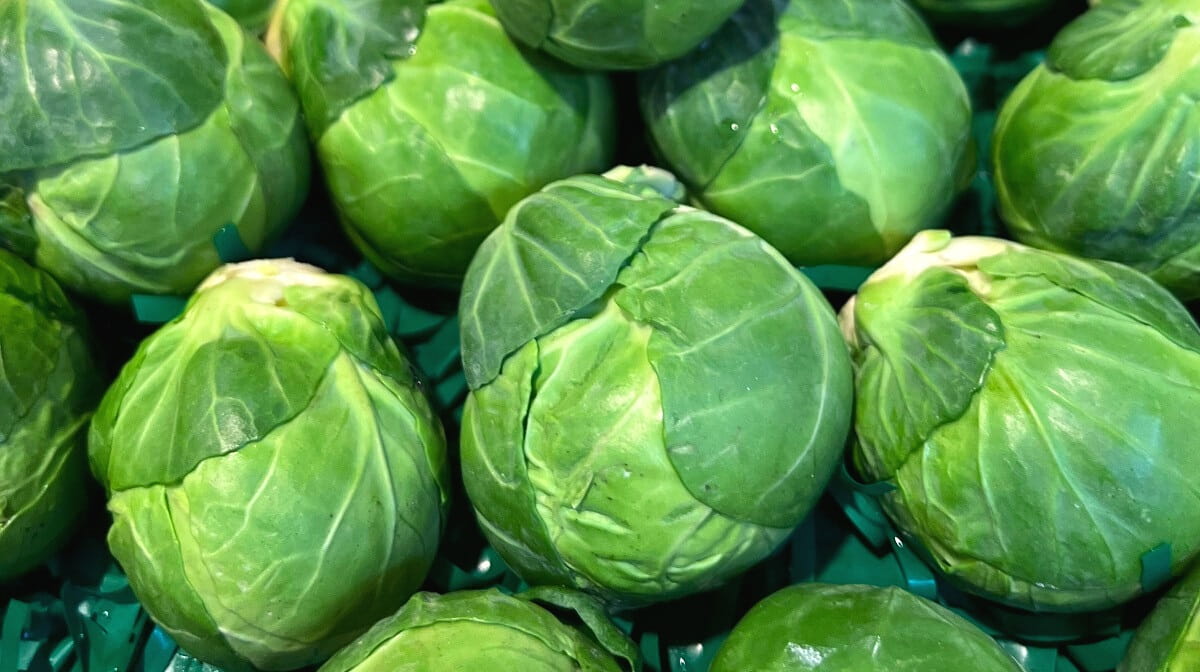Last updated: March 16, 2024
Join me in my search for the most flavorful green vegetables the world has to offer, from the nutrient-packed kale to the versatile spinach.
Of all the nutritious foods that you can include on your plate, green veggies continue to be some of the most celebrated. Whether you’re trying to lose weight or take better care of yourself, you can never include too many nutritious greens in your diet.
Below, I have listed fifteen tasty, nutritious, and versatile green veggies from around the world, including practical tips on preparing and serving them.
1. Asparagus

One of the most popular spring vegetables is asparagus. These green spears are the young shoots of Asparagus officinalis, a flowering perennial plant. If left to mature, asparagus grows into a tall, “ferny” plant with lacy leaves and bright red seed pods.
This popular vegetable is believed to have originated in the eastern Mediterranean, where it grew along coastland where the salty soil kept weeds at bay. Today, asparagus is cultivated across Europe and America and grows wild in many US states.
While most asparagus is green, there are purple varieties and special white cultivars that are grown without sunlight. All varieties are great when baked, sauteed, steamed, and even fried.
2. Bok Choy
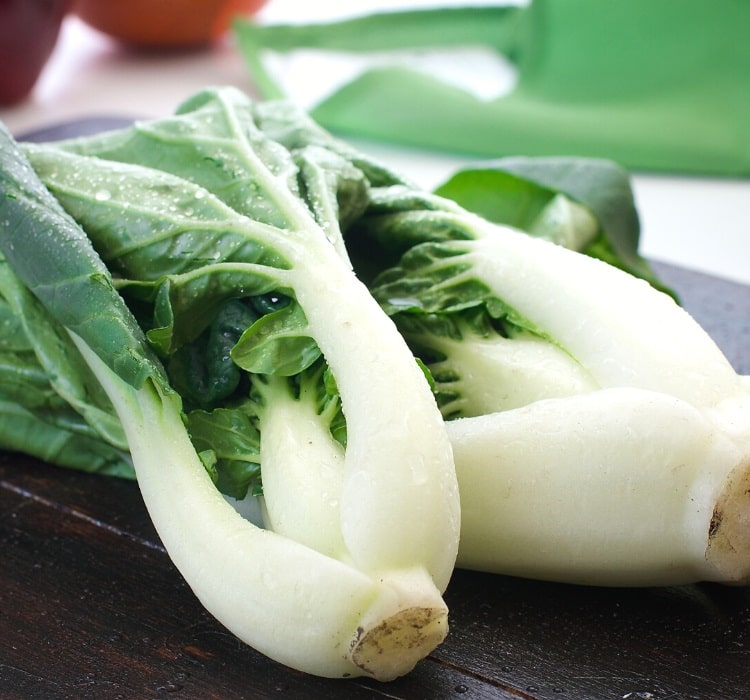
Bok choy is a type of Chinese cabbage closely related to Napa cabbage but with a unique look. Unlike most cabbage species, this one does not form heads. Instead, the dark green leaves grow upright and close together from a pale bulbous base.
With a flavor somewhere between water chestnuts, lettuce, and spinach, bok choy is a mild green that easily takes on the flavor of the dish. It is common in Eastern cooking, where it is often stir-fried, steamed, or boiled in soups.
This unassuming, nutrient-dense leafy green has grown into one of my favorite Chinese veggies over the years.
3. Broccoli

Potentially the most popular green veggie in America, and certainly one of the most detested by children, is broccoli. It’s a green vegetable that can be enjoyed in many ways, including steamed, roasted, sauteed, stir-fried, and raw.
The part of the plant we eat consists of tightly packed flower buds and the thick stems they grow from. Broccoli, a close relative of cabbage, was first bred in the Mediterranean during the Roman Empire and later selectively bred to create the vegetable we love (and hate) today.
While many kids have trouble getting behind broccoli’s earthy, bitter taste, this is one nutritious green vegetable worth choking down.
4. Broccolini
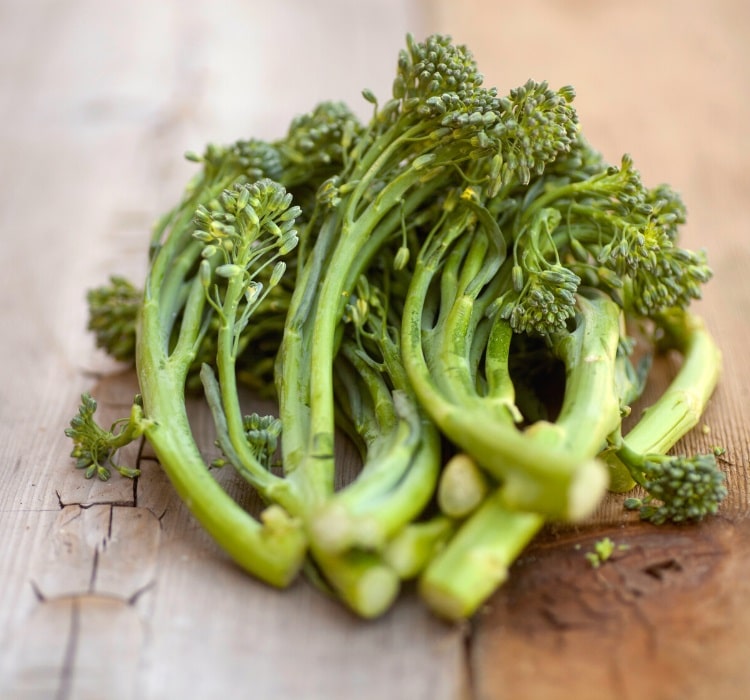
Broccolini is a hybrid between broccoli and gai lan, also known as Chinese kale or Chinese broccoli. It looks very similar to regular broccoli, but with thinner, longer stalks, and smaller florets. The flavor is less bitter than its parent plants, with sweeter, earthier undertones.
This unique veggie came into existence in the 90s after a Japanese produce company started experimenting with broccoli crosses. The company wanted to create a milder form of broccoli that would grow better in hot climates. Broccolini first hit the US markets in 1996.
Today, many cultivars of this hybrid are available, and all share similar nutritional characteristics with broccoli. Like its namesake, broccolini is often prepared by sauteing, steaming, or roasting. It can be eaten raw but is more nutritious if lightly steamed. I also enjoy creating broccolini smoothies.
Keen to learn more? Check out my guide explaining the differences between broccoli and broccolini for more interesting facts about these two greens and related greens.
5. Brussels Sprouts
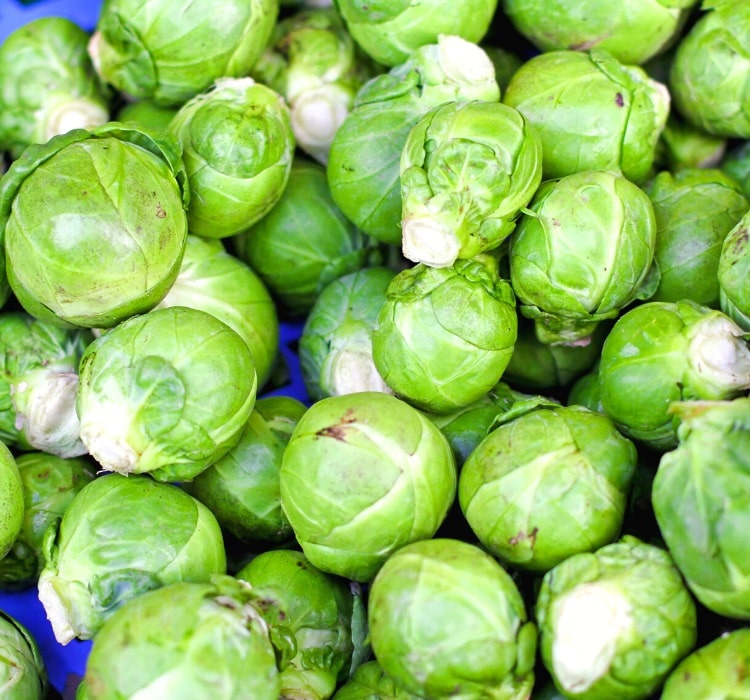
Another popular vegetable that often incurs a strong reaction from children (and many adults) is Brussels sprouts. This green vegetable is closely related to broccoli and is also part of the cabbage family. The sprouts are the tightly packed leaf buds that form on the thick central stalk of the plant.
Like other cabbage species, it is native to the Mediterranean region. But it did not become popular until cultivation began in Brussels, Belgium, in the 13th century. Today, this cool-season vegetable is grown across the globe.
Brussels sprouts can be eaten in a variety of ways. They can be cut into thin slices and added raw to salads, halved and roasted, or steamed whole. While the bitter, earthy flavor is too much for some, it pairs surprisingly well with balsamic reduction, creamy cheeses, and many herbs and spices.
6. Celery

Celery, a light green, fibrous vegetable, has been cultivated and consumed by humans for thousands of years. In the US, the crisp stalk is primarily used, while in Europe, both the stalk and root have culinary uses.
While these two parts of the plant have a mild flavor, the leaves are bitter and salty with an anise-like taste. Celery is most often added to soups or eaten raw. The crisp stalk is usually sliced and added to salads or used in larger pieces and paired with dips. Celery seeds, which are equally nutritious, are often used as a spice in the kitchen.
All parts of this vegetable contain valuable nutrients, including many different antioxidants. That nutritional value, along with plenty of fiber and a very low-calorie load, makes celery the perfect green vegetable to add to your diet.
Celery is one of those vegetables picky eaters tend to like because the stalk can be eaten as an actual snack. My kids absolutely love celery.
7. Collard Greens

While collard greens pose a passing resemblance to kale, these leafy greens are actually more closely related to broccoli and cabbage. They share a similar flavor to these close cousins and are bitter when eaten raw and earthy when cooked.
This leafy green vegetable is popular in Brazil, Kasmir, Portugal, and certain parts of Africa. In the US, collard greens are highly associated with the South.
Collard greens are often stewed with ham or turkey and a handful of other earthy vegetables. They can also be eaten raw in salads and on sandwiches, sauteed, or steamed. Like other dark leafy greens, they are high in many nutrients, including iron, magnesium, and vitamins A, C, and K.
8. Green Cabbage
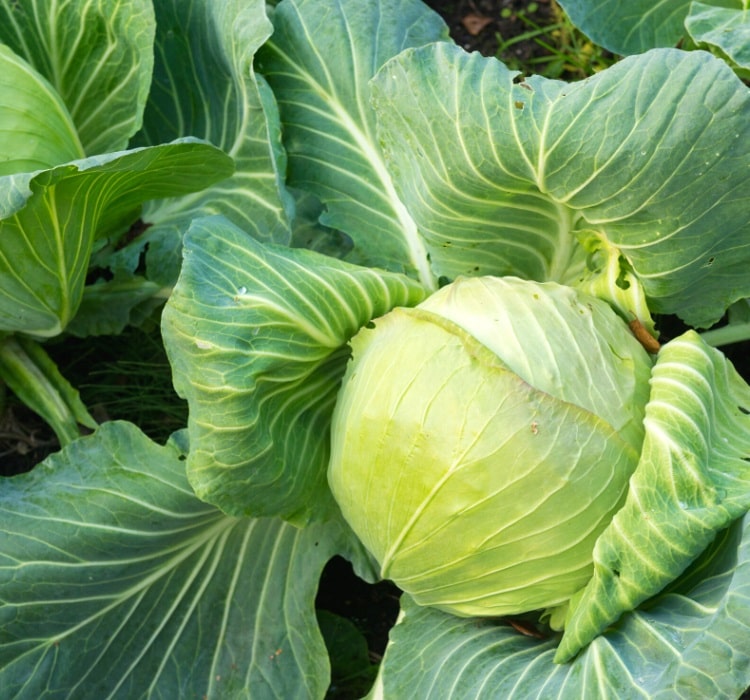
Like other types of cabbage, green cabbage grows in tight, heavy balls. The leaves are waxy and pale green in color and chewy when raw. Like other cabbage relatives, this vegetable tends to give off a strong smell when cooked but has a relatively mild flavor.
Because green cabbage is easy and relatively cheap to grow in most temperate and cool climates, it’s a green vegetable that is eaten worldwide.
In recent times, we’ve seen many cabbage-related diets and fasts. Many of these stem from the fact that cabbage is loaded with nutrients while being very low in calories. Green cabbage is most often used in soups and stews to add flavor to the broth. It can also be used raw in salads and slaw recipes.
9. Kale

Kale comes in a variety of colors, including purple and blue, but green is by far the most popular cultivar. The chewy leaves have a bitter, earthy flavor similar to other cabbage relatives. They can be smooth or ruffled, depending on the variety.
This leafy green is very high in vitamins K and C, and is also loaded with powerful flavonoids and polyphenols. While kale has recently seen a surge in popularity thanks mainly to these nutritional benefits, this green vegetable has actually been around for thousands of years.
Kale can be eaten raw in salads or cooked in various ways, including sauteing, baking, and air drying. I also love making kale smoothies.
10. Microgreens

Microgreens aren’t a single green vegetable, but rather the seedlings of a variety of vegetable and herb plants. Most commonly, microgreens are a mix of broccoli, kale, arugula, beets, and/or cilantro sprouts. But there are over 25 different vegetables known to create commercial and homegrown microgreens.
As you can imagine, the flavor and nutritional profile of microgreens depend largely on the type of sprouts used. “Spicy” mixes often contain mustard, kale, and kohlrabi. Rainbow mixes are often made up of green veggies like broccoli and cabbage, as well as red and purple veggies like beets and purple kale.
Even highly flavored mixes tend to add more visual and textural appeal to dishes than actual flavor. Because of this, microgreens are often used as garnishes or in large quantities on sandwiches, wraps, and burgers.
11. Nopal
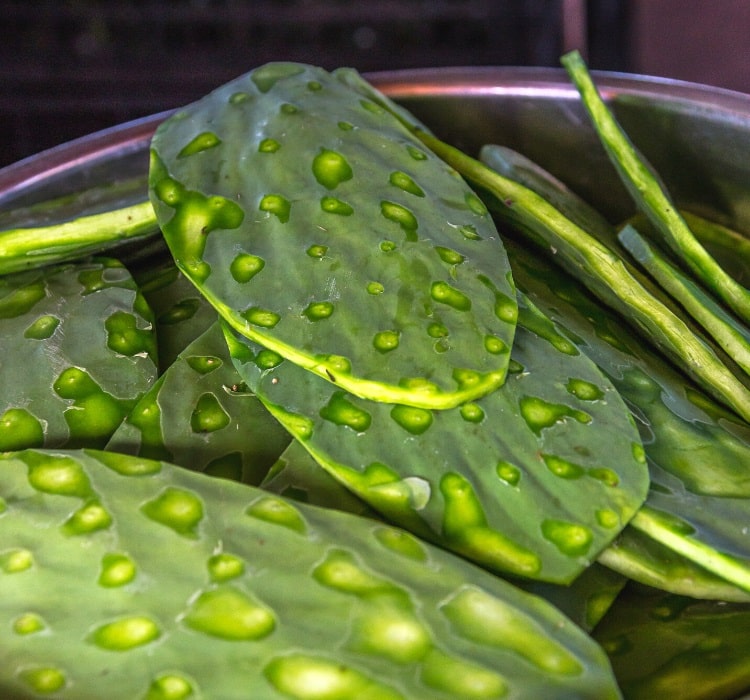
Nopal, also referred to as nopales, isn’t your typical green vegetable. This green veggie comes from the pad of a prickly pear cactus. Prickly pears are native to Mexico, where nopales are a common ingredient in various dishes, including soups, salads, and marmalades.
The pads of the cactus are cleaned of thorns and usually cut into strips. They can be used raw or cooked, and can be canned for future use. Nopal cactus tastes somewhat like tart green beans. The texture is crisp but slimy. The mucilaginous liquid they produce during cooking is often used in the recipe.
While the nopal vegetable is hard to find outside of Mexico and the American Southwest, it is worth hunting down. Not only is it tasty, but nopal is also very nutritious. Read my guide on preparing nopales for more details on how to cook them.
12. Romaine Lettuce
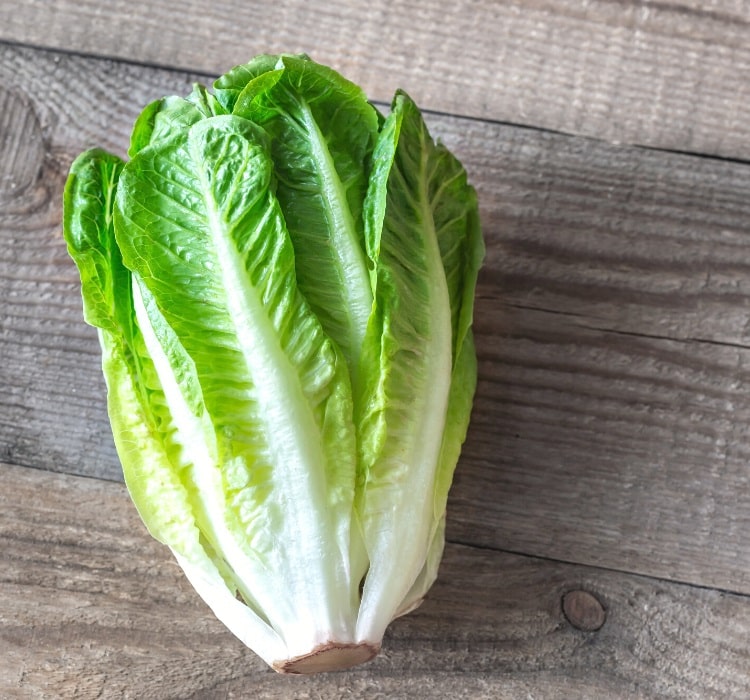
Romaine lettuce is a specific variety of lettuce that grows in upright clumps. Each leaf has a distinct rib in the center. Romaine is most commonly green but can also be red or violet, depending on the cultivar.
Like other types of lettuce, romaine has a mild flavor. It isn’t as sweet as iceberg lettuce but isn’t as bitter as other varieties. Thanks to its crisp texture, it makes a great base for salads, and is the most common lettuce used in Caesar salads.
All lettuce originates from a single prickly, bitter, wild ancestor native to the Mediterranean and the Middle East. Where romaine lettuce was first cultivated is unclear, but the Greek island of Cos or Arabia seems most likely.
13. Spinach

Spinach, one of the most famous leafy greens, is a flowering plant native to Asia. But this popular vegetable began making its way around the globe over 2,000 years ago. Today, it’s used in various cuisines from Chinese to South American.
The leaves of the spinach plant aren’t as crisp or watery as lettuce but are often used alongside it in salads. Spinach can also be steamed, boiled, and sauteed.
As a green vegetable, spinach is very nutritious, offering a great variety of vitamins and minerals. And, pound for pound, it has more protein than steak!
14. Swiss Chard

Swiss chard, also known simply as chard, is another healthy leafy green worth adding to your plate. It’s packed with many of the same nutrients found in spinach and can be prepared in many of the same ways, even though these two vegetables are not closely related.
While Swiss chard leaves are green, the stalks come in various colors, including red, pink, yellow, and white. All varieties grow to an impressive size with thick stalks that may or may not be discarded, depending on the recipe.
Raw chard can be chopped and used in salads, or kept whole and used as a low-carb wrap. While the flavor of chard is mild and tender, many still prefer it cooked, which neutralizes the taste even more. Chard can be steamed, sauteed, or stir-fried.
15. Okra

Okra is a green vegetable that is either popular or unheard of, depending on where you live. It’s actually the seed pod of the plant that’s consumed. These pods look something like a geometric pepper and are filled with edible round seeds.
Much like the argument over whether okra is delicious or disgusting, the origins of this plant are highly disputed. Some list okra as native to Africa, while others claim it came from Asia. Further complicating this issue is that this plant is now widely cultivated worldwide in tropical, subtropical, and even colder climates.
Much of the debate about whether okra is worth eating or not comes from the fact that the seed pods release a gooey slime when heated and pickled. While the sweet, grassy flavor of okra is easy to like, this mucilaginous quality is hard for some to stomach. But I love it!
Okra is commonly used in some Asian, African, Brazilian, and Caribbean cuisines. It is often used in stews and stir-fries, but can also be pickled or fried.
